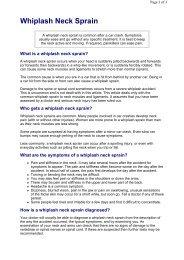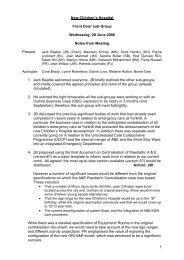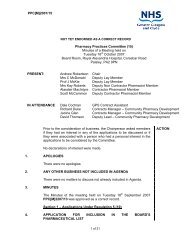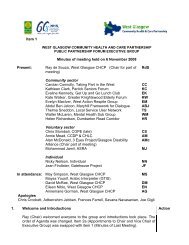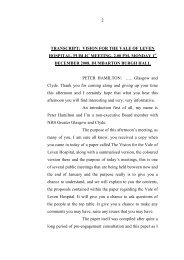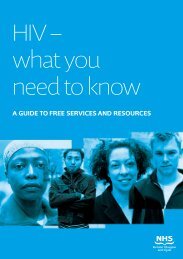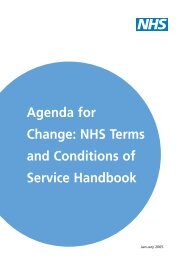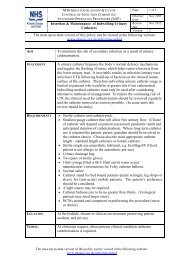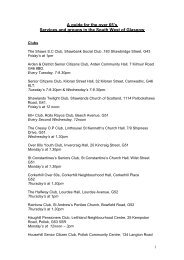Guidelines For Insulin Initiation and Adjustment In Primary Care
Guidelines For Insulin Initiation and Adjustment In Primary Care
Guidelines For Insulin Initiation and Adjustment In Primary Care
Create successful ePaper yourself
Turn your PDF publications into a flip-book with our unique Google optimized e-Paper software.
<strong>Guidelines</strong> <strong>For</strong> <strong><strong>In</strong>sulin</strong> <strong>Adjustment</strong> <strong>In</strong> <strong>Primary</strong> <strong>Care</strong>.<br />
<strong>In</strong>itiating insulin therapy in primary care <strong>In</strong> Type 2 Diabetes<br />
The UKPDS 4 demonstrated that;<br />
• Beta cell function declines with time.<br />
• Good glycaemic control reduces the complications of diabetes.<br />
• Optimum glycaemic control becomes more difficult with time <strong>and</strong> at least 1 in<br />
every 25 patients per year need to be transferred to insulin to achieve this.<br />
The decision to start the Type 2 patient on insulin is usually precipitated by<br />
• Worsening symptoms of hyperglycaemia.<br />
• A persistently elevated HbA1c level despite maximal or near maximal doses<br />
of oral hypoglycaemic agents.<br />
• <strong>In</strong>tercurrent illness or patient commenced on steroid therapy.<br />
It is essential to review the patient’s diet <strong>and</strong> compliance with medication prior<br />
to making the decision to commence insulin. (CSBS st<strong>and</strong>ard 2, 3, 4 & 8) 1<br />
It is best practice that a registered dietitian should undertake the dietary<br />
review.<br />
Step 1<br />
Discuss with the GP or a consultant diabetologist <strong>and</strong> agree on the appropriate<br />
glycaemic target <strong>and</strong> insulin for the individual patient.<br />
Clarify continuing use or discontinuation of oral hypoglycaemic agents.<br />
<strong>In</strong>volve the patient in the choice of how often he/she will administer insulin 1 .<br />
(CSBS st<strong>and</strong>ard 2)<br />
Step 2<br />
Ensure patient underst<strong>and</strong>s the broad principle of insulin treatment <strong>and</strong> is proficient<br />
at blood glucose monitoring 1 . (CSBS st<strong>and</strong>ard 3 & 4)<br />
Identify patients who may be unable to blood monitor or self administer insulin <strong>and</strong><br />
involve District Nurses to initially supervise practical skills or continue to visit long<br />
term.<br />
Step 3<br />
Ideally instruct the patient on the use of an insulin delivery device about a week prior<br />
to commencing insulin. It is important that they overcome their fears at an early stage<br />
as this may hamper further education 1 . (CSBS st<strong>and</strong>ard 3 & 4)<br />
Step 4<br />
Choose the appropriate regimen <strong>and</strong> calculate a ‘safe’ dose of insulin using the<br />
following tables A - D, for guidance. Ensure a relevant prescription is available 1 .<br />
(CSBS st<strong>and</strong>ard 2)<br />
Step 5<br />
If antidiabetic agents are to be discontinued instruct patients to take final dose the<br />
evening before starting insulin 1 .<br />
Reviewed January 2010 5





